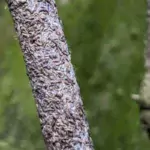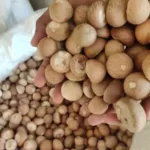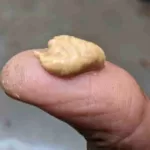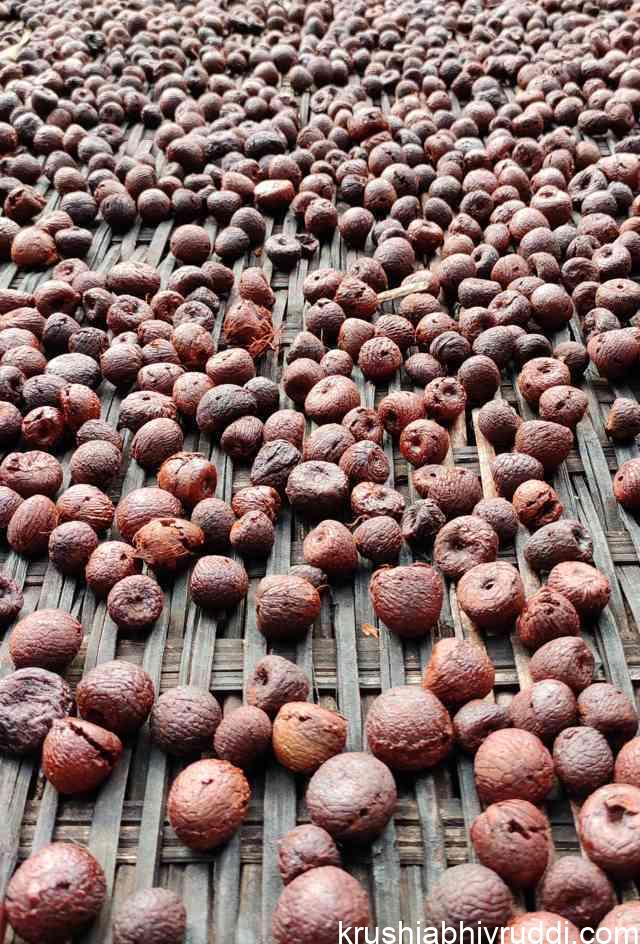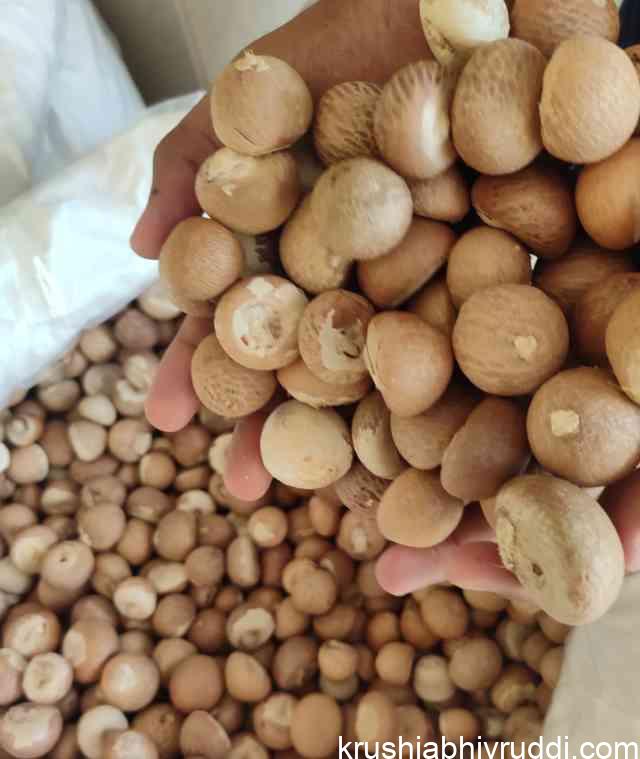Our country is the best suitable place in the world for pepper cultivation. The glory of our black pepper was recognized by foreigners in ancient times. Here the climate condition for pepper cultivation is very good. We assume that countries like Vietnam, Cambodia, Srilanka, Malaysia are the best suitable places for pepper cultivation is not completely true. Initially, our country is a leader in the world in pepper cultivation. If we seriously follow the cultivation practices we can regain the glory of our black pepper production says Jommy Mathew a farmer who developed a research plot of black pepper.
Our Krushi Abhivruddi team brings you a research plot of the black pepper garden of Jommy Mathew. It is not an institutional research plot. It is purely a farmer’s plot. Farmer adopted all the new technologies in this and made this a model. We can’t find this type of pepper garden anywhere in the country in farmer’s fields and research centers. This type of model garden is developed by Jommy Mathew. Here we will get the opportunity to learn a lot of cultivation techniques.

Above 50 varietal diversities:
We bring you three model pepper gardens located in the Shimoga district. Karnataka state, India. One is at Thirthahalli Taluk Mandagadde, the next one is at Ripponpete, and another one is at Linggadahalli, Sagara taluk. In all the above plantations he cultivated pepper in support of Rubber trees, Silver oak trees, and Subabul trees. As an intercrop with pepper, he planted coffee. All are model plots.
At Ripponpete, Sagara taluk. Shivamogga dist.here around 50 good varieties are planted. Some other varieties are also here. What he experienced from previous pepper cultivation, he implemented here. The support plants for pepper vines are Silver Oak trees and Subabul trees. This is the recently developed 2019 pepper garden says, Mr.Jommy Mathew.
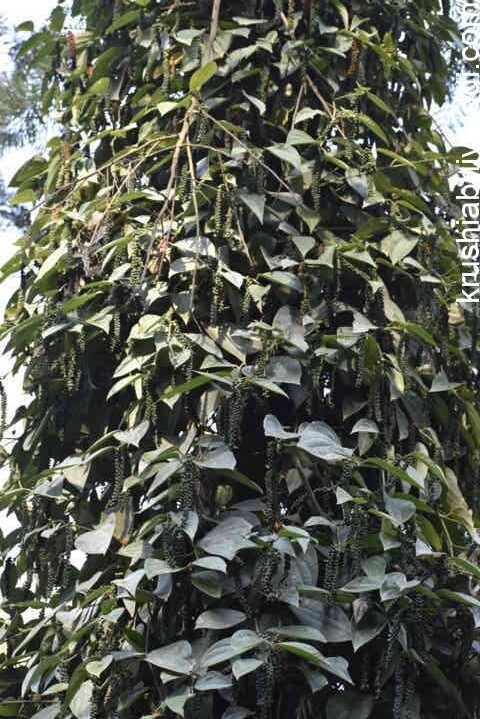
How to plant pepper:
Land preparation should be done before planting. To prevent water logging slopes should be done at all sides. The water especially rainwater should be drained immediately. For subsurface water draining underground drainage is also made. No water accumulated in the soil. No soil disturbance at any time after planting. No weedicides and no deep hand weeding also. We preserve weeds in the rainy season. At the end of the rainy season by hand weeding all weeds are mulched to the bottom of pepper vines. It acts like moisture conservation and organic mulching. Manuring some quantity of Farmyard Manure and Sheep manure. It is not annually. The chemical fertilizers are applied twice a year in pre-monsoon and post-monsoon. Bordeaux. Spraying once in pre-monsoon is essential. Pepper vines are affected by the disease under two conditions. One is excess atmospheric moisture and soil moisture. For Atmosphere moister Bordeaux. mixture required. For soil, moister prevention land preparation should be done like this. Here we can control 99 % of diseases. This is the plant of two years. Last year in first-year completion he got a little bit of yield. This year (2) he is expecting an average of ½ kg dry pepper.
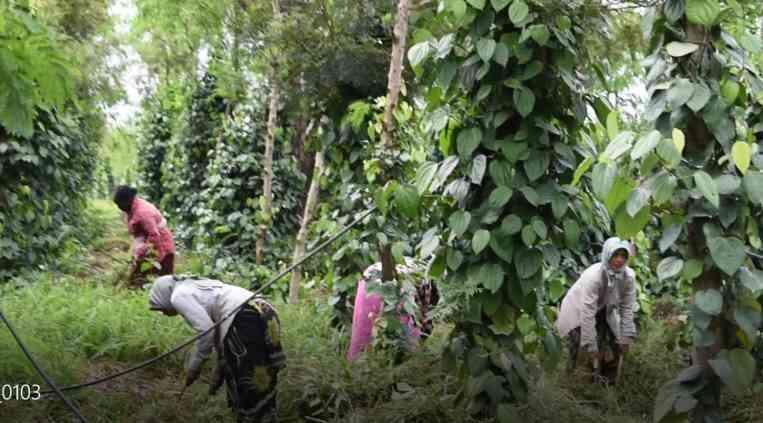
Why did choose many varieties:
If we plant mono varieties there is a problem of yield variation and disease chances. Pepper cultivation is a very risky venture. Any time the disease will affect the crop. The disease will affect some varieties for some years. some will survive in climate factors. Along with yield also. Some varieties yield well in some years and some give very less yield. To maintain a balanced yield the diversity of varieties is very helpful. About the seed propagation, he says it is not good. Because the variation will happen and the yield starts late. The best method of plant preparation is orthotropic shoot propagation.
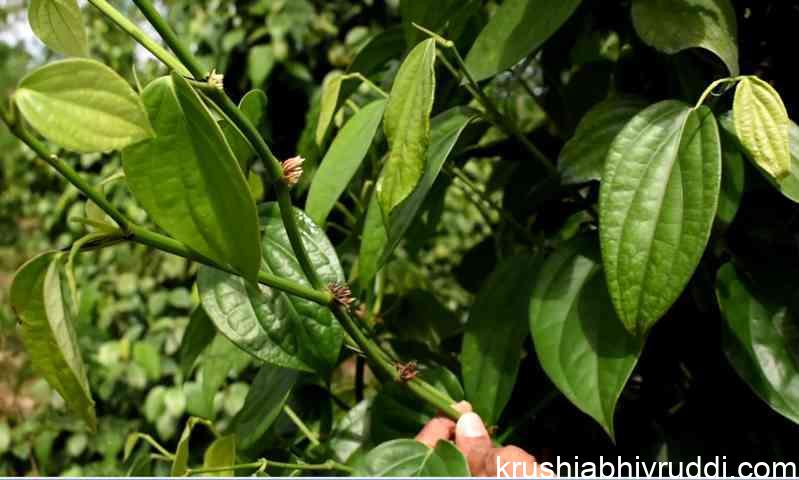
How to make Orthotropic shoot plants:
In black pepper Orthotropic shoot propagation is very good. It will start early yield and good yield. Yield will start from its bottom area. Orthotropic shoots are collected at the top portion of the growing vine. It has got node roots. This part of the vine is cut and placed in the poly bag and nourished in a shade house for a month. Then it will develop roots. After root development, you can plant it. If some hardened shoots are selected, in situ planting is also possible. In the light rainy season, direct planting is also possible. Another easy method we show here is the air layering of shoots. The shoots like this we can do air layering with plastic tea cups. Fill the coir pith inside the cup and tag it on both sides. The good root will formulate inside within a month. This is the hard-grown orthotropic shoot. It is best and grows well. It will survive in direct planting also. Next, cut it from the mother plant and plant it directly. This is the ideal orthotropic shoot. In this, we can make 3-4 plants. In every node, you can air layer and make plants. In a shoot, you can get 3-4 plants. When we plant directly lengthy (Around 1-2 feet) is required. Some mortality chances are there. If you put cups to the rooting node no mortality. June to October time is ideal for propagation.
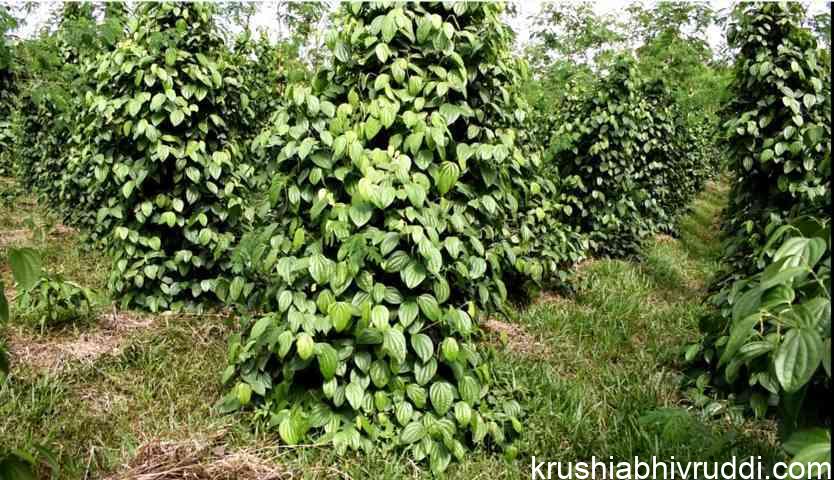
This is the pepper plantation of the Ripponpete plot. Old rubber trees existed when he purchased the land. He is not taping latex from the rubber tree because now it is not economical. So he planted black pepper and coffee. The growth of pepper is fantastic. It covered a full tree and it will give 7-10 kg of dry pepper. The coffee variety Is Chandragiri. Coffee will suet very well in rubber plantations. He is getting 2-3 Times higher income from a rubber tree by planting pepper. In between rubber plants, he planted Erithrena Indica (Hongare) to gap-filling and planted pepper. The beauty of pepper speeded on rubber plants looks very nice. Rubber trees are available anytime for taping. He kept a space between a single vine to a plant. See the yield of pepper.
This is the plot of Lingadahalli, Sagara taluk. He purchased it in 2016. Here when he purchased some rubber trees were present. Most of the land is empty. He utilized it for black pepper cultivation. According to the existing land slope he did all the cultivation practices. He planted pepper to Rubber plants also. In space, he planted silver oak for pepper planting. He kept some existing trees for pepper support. I visited this plot in the year 2016. That time he started to initial steps of pepper planting. Now after 4-5 years here we find the full area covered with pepper. Here we can see all his collection varieties. Paniyur 1, Paniyur 2, Paniyur 5, Shrikara, Shubhakara, paniyur 3, karimunda, Vellanaabhan, Arakalamundi, V series of section varieties, Imperion, Nelamundi, Chavalamumdi, Panchami, Pouranami, Tevam, Girimumda, and many more varieties are found here. In between pepper coffee plants are accommodated in a double row. In between 4 pepper plants, 4 numbers of coffee plants are accommodated. The base of the pepper vines is covered with mulching sheets for preventing excess soil moisture. We cannot find any garden like this anywhere. Here all vines are greenish and healthy. Only roads are kept empty and all other spaces are covered with the crop. All around his garden road facilities are provided.
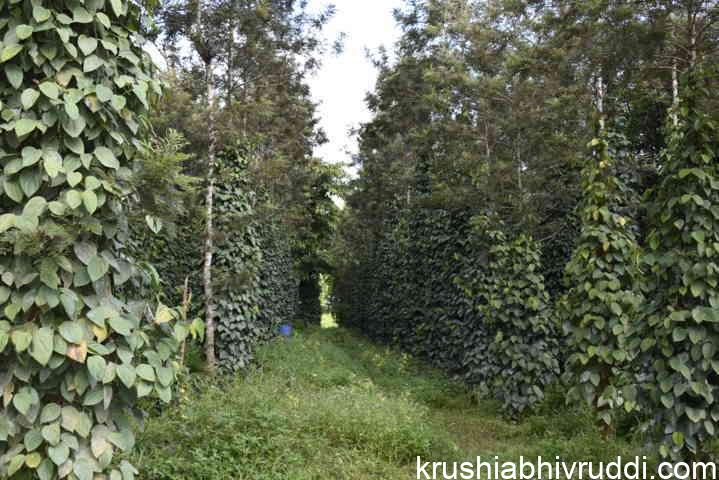
Mandagadde Farm:
Here we are viewing the picture of Mandagadde Farm, located at Thirthahalli taluk, Shimoga district. This garden he purchased for rubber cultivation purposes when the rubber rate was at its peak. After his purchase, the rubber rate came down and he decided to leave it the taping. Immediately he planted silver oak plants in between two rubber trees and planted pepper. Now the age of pepper vines is around 6-7 years. Here we can find all his collection varieties. This land is hill-type land, so he did a systematic terrace for pepper cultivation.

Jommy Mathew explains his farm management:
I am in the agriculture field for the last 25 years. I started agriculture in 1997. After completing my MBA degree in 1992, I worked for 4-5 years. After that, I entered into agriculture. First I started my agriculture with Arecanut and Rubber. My first agriculture plot is at Ripponpete, here I have areca nut, black pepper, and rubber plants. When plants areca nut and rubber the main problem is the gestation period. We have to wait 6-7 years for income generation. For this problem, I started short-duration intercrops like bananas like Nendran, G-9, Elakki, etc., and ginger. In ginger, I tried all good varieties. Also, I planted Red lady papaya. By intercrop, the farmer can generate turnover income. It will help to reinvest in additional lands. The first land that I purchased was at Rippon pate, There I generated all funds to purchase land at the Rippenpete plot Lingadahali plot, and Mandagaddde plots. This Mandagadde plot I purchased this land. When the rubber rate started declining I decided to plant pepper. Rubber trees are in 20×10 spacing. In between 20 feet one silver plant. Here there are 15-20 varieties. Among them 25-30 % Panniyur 1 variety. Around 12 good-yielding varieties are also here. By making the terrace I managed water logging and soil conservation. No cultivation practices. No root disturbances. Abundant mulching is done by dry leaf and leaf litter. A limited quantity of fertilizers is applied. 2-3 times of Bordeaux spraying, one-time COC drenching, and microbial consortia application micro nutrient spraying all scientific methods of cultural practices are followed.
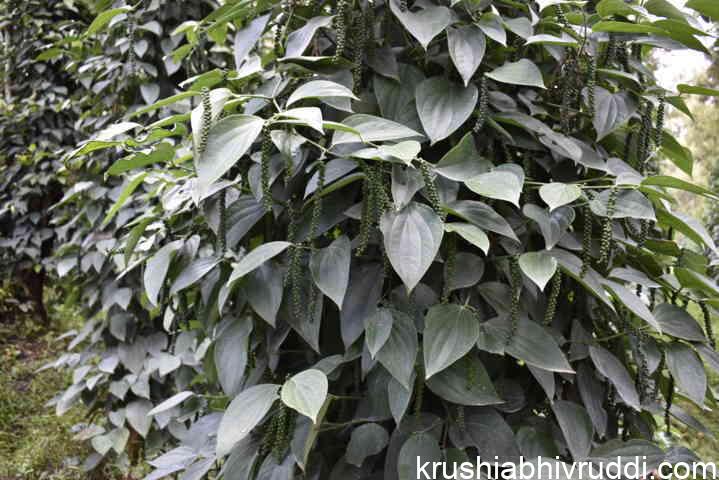
My native is Ernakulum Dist. Kerala. We are agriculturists. We have areca nut, rubber, coconut, Nutmeg, etc crops. So we are not new to agriculture. There are some limitations in Kerala to expanding the areas. So I selected this place. This place is very well suitable for pepper cultivation. Same crops I am growing in this place. We are in the 4th generation of agriculture. Mandagadde plot is around 10 acres of rubber and silver oak. He expects now around 8 kg of dry pepper per plant. My intention in purchasing this land is for rubber cultivation. Unfortunately, rubber now become a support tree for pepper. If any rubber rate rises in future days there I kept tapping space for latex collection. If we cant tap latex there was no loss of latex. It will available when we tap starts. But here we trimmed some branches so there were fewer yield chances. In the Ripponpete plot there I tried pepper on Subabul plants. I am trying pepper with Subabul trees for the last 12-13 years. When I visited Vietnam, last three years back there they grow pepper with this plant. I tried this to make it more perfect than Vietnam. Our area is better than Vietnam. Here is what I get the production in this plot is more than in Vietnam. If we do more scientifically we can beet the yield of Vietnam. Now our productivity is very less in Vietnam. Here I can get 3 times more (6-7 tons) than the productivity of Vietnam. In the Lingadahahhi plot, 15 acres of land is purely for pepper cultivation. I follow orthotropic plants in maximum numbers. In orthotropic shoot pants, there are very less runner shoots. For Disease control is advisable to select plants or planting material from a known source. Pepper plants are affected by fungal disease, Viral disease, and nematode disease. Before collecting planting material we have to observe the source.

In my pepper cultivation, many people guided me. Dr. Venugopal sir, retd. Scientist of IISRI Appangala, his motivation is always memorable. I am in touch with him for the last 10 years. Before his contact, my pepper cultivation system is not much scientific. He guided me by showing other model pepper gardens. He is the teacher for all this success. Also, there are a lot of progressive farmers like Mahesh Kumar From Sakaleshpura, Amanullah Kahn From Sagara, and many other farmers of Sirsi, Sagara. Dr. Venugopal sir sent me to some award-won black pepper growers. He explained the secrets of cultivation. This motivation helped me to get IPC (International pepper community award) This year I am one of the people selected for the IPC award. The International Pepper community is an inter-government organization. UA. United states economy for the Asia Pacific. Its headquarters is in Jakarta. The member countries are India, Shi Lanka, Malaysia, Vietnam, Indonesia, the Philippines, etc. Every year they announce awards. This year they selected three people from around the world. I am one of them. Before this award, a few others from Karnataka got this award. It is our pride that, many farmers in Karnataka are eligible for this prestigious award. In India, Karnataka is the topmost pepper-producing state. There are world-recognized pepper growers in Karnataka. Along with pepper coffee is a well-suited intercrop. Pepper is the intercrop with coffee. But now it is changed. Many farmers grow coffee as an intercrop with pepper. Many farmers are growing coffee with areca and pepper gardens. With one acre of coffee at black pepper garden we can expect 1 lakh income annually. It can prevent weeds also.

